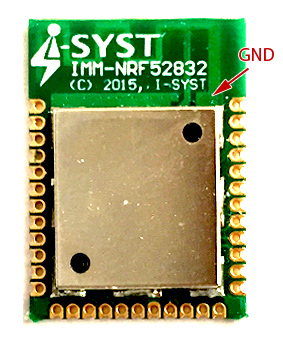Dear All,
we have been working on a very small PCB design using nRF52832. Some time ago, in another thread, I asked for an Eagle footprint for an antenna and got the quick answer (thanks again!) that it's available on GitHub and there's also information on how to connect it to the chip.
For the meantime we have bought some of the IMM-nRF52 PCBs for testing and they also use the smaller antenna footprint, which we plan to use in our design.
We noted that one end of the antenna in the IMM-nRF52 is connected to the shielding, which is grounded, see picture below.

This kind of confuses me. So here are my questions:
-
Do we really need to ground one end of the antenna (this was not to be seen in the Eagle footprint provided on GitHub)?
-
(When) do we need to use metal shielding like the IMM-nRF52 does? (The nRF52 DK does not haveshielding and still works well...)
I would be very grateful if someone could answer my above questions.
Thanks in advance, NewtoM
